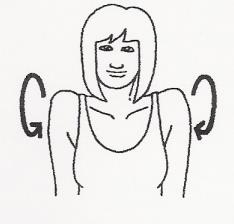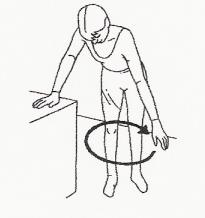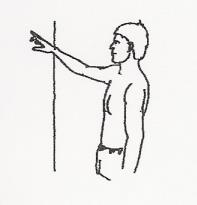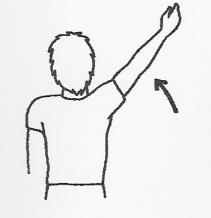Download and print as a PDF (252kB pdf)
On this page
- What is this information about?
- Why have I been given this information?
- What is a soft tissue injury of the shoulder?
- How long might it take for my injury to heal?
- What should I do if I am in pain after my injury?
- What do I need to know about moving around and exercising soon after my injury?
- What exercises can I do?
- Where can I find further information or advice if I need it after I have read this information?
What is this information about?
This information is about soft tissue injuries of the shoulder. It:
- tells you about the different types of soft tissue injury that you can get in your shoulder
- tells you what you can do to help your injury to heal more quickly
- shows you some exercises that you can do to help you to recover.
Why have I been given this information?
We have given you this information because you have been diagnosed in the Emergency Department (A&E) as having a soft tissue injury in your shoulder. The advice in this leaflet, if you follow it, will help your injury to heal as quickly and as well as possible. This will help you to return to your usual activities as soon as possible.
What is a soft tissue injury of the shoulder?
There are many different soft tissues in the shoulder. These include:
- ligaments. These connect a bone to a bone at a joint.
- joint capsule. Contains fluid that cushions and protects the joint.
- muscles
- tendons. These connect bones to the muscles that control movement of the joint.
- cartilage. This covers the surface of a bone at a joint and helps a joint to move smoothly by reducing friction.
- nerves. These send and receive messages between the brain and other parts of the body.
When you injure any of these you can get pain and inflammation (swelling and redness).
How long might it take for my injury to heal?
This depends on the type of soft tissue that you have injured and how severe your injury is. It may take between one to six weeks, or longer if your injury is severe.
What should I do if I am in pain after my injury?
- Take your usual painkillers. Follow the dosage instructions on the packet. Contact your GP or pharmacist if you are still in pain after taking your usual painkillers.
- Use an ice pack. Wrap an ice pack (or a bag of frozen peas) in a damp towel and put it on your shoulder. Do this for up to 15 minutes 3 times a day.
Be aware
Make sure the ice is never in direct contact with the skin. Check your skin regularly. If your skin goes purple or white or blisters or if your pain increases do remove the pack straight away. This may be difficult to see on black or brown skin.
- Use a heat pack. Apply heat to your shoulder. This can help to reduce your pain and make any stiffness you have better before you exercise. You can use a hot water bottle wrapped in a towel as a heat pack.
Be aware
Do not put a heat pack onto an area that is already hot and red.
Do:
- Rest your shoulder. This will stop your shoulder being under too much strain. You may have swelling at first after your injury. Resting your shoulder will help this to settle. How much you need to rest your shoulder will depend on how severe your injury is.
- Move your shoulder often. Although you need to rest your shoulder at first it is also important to move it. This helps your shoulder to heal and can stop it from getting stiff. There are exercises that you can do further on in this information.
What do I need to know about moving around and exercising soon after my injury?
- Do not rest for long periods. This can cause stiffness in the shoulder and contribute to weakness. This can mean that it will take longer for you to recover.
- Doing simple exercises can help your shoulder to work as well as it did before your injury again.
- It may be uncomfortable for you to move stiff muscles and joints at first. This will become much easier as you are able to move your shoulder again.
What exercises can I do?
Do the following exercises gently and slowly. Only move as far as feels comfortable.
Do each exercise up to 10 times, two to three times a day.
These exercises should not make your pain worse. If your pain gets much worse stop doing the exercises and speak with your GP or physiotherapist before you start them again.


Pendular exercises. Leaning forwards, let your arm hang down. Gently circle one way and then the other way


Move your hand behind your body.

Where can I find further information or advice if I need it after I have read this information?
Please use the NHS Website www.nhs.uk for general medical information. You can contact the NHS 111 online (111.nhs.uk) or phone (phone: 111) service for information and advice on how to get treatment if you think you may need it.
You can also contact your GP surgery. There is a walk-in Minor Injuries Unit at Bognor War Memorial Hospital which can help with minor to moderate illnesses and injuries. If you are not sure whether your condition can be treated at the Minor Injuries Unit, please phone 01243 623 563 first to check
This information is intended for patients receiving care in Worthing and Chichester St.Richard’s hospitals.
The information here is for guidance purposes only and is in no way intended to replace professional clinical advice by a qualified practitioner.